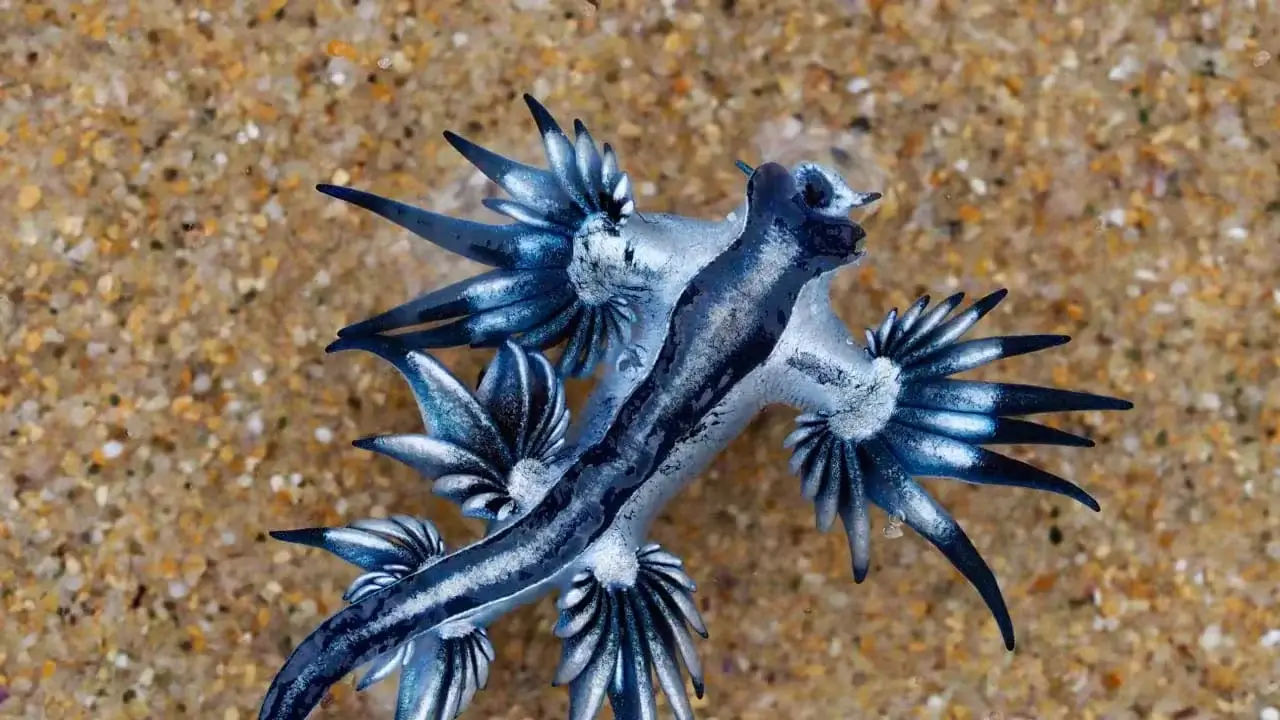
An unexpected event occurred in the city of Guardamar del Segura, located in Alicante province, Spain. In the city’s popular beaches, a poisonous and rare marine organism — Glaucus atlanticus, commonly known as the “blue dragon,” was discovered in the water. Local media reported this, and CNN also confirmed the information.
On August 20, Guardamar police published an official announcement on their social media page. It stated that, in order to ensure the safety of residents and tourists, swimming at the city’s beaches was temporarily prohibited. “Due to the appearance of the ‘blue dragon,’ all beaches will be closed and reopened only after new instructions,” the statement said.
In fact, the name of this creature is connected with its appearance, which resembles a mythical dragon. Its length is only 3 centimeters, but because of its poisonous features it is considered very dangerous. According to scientists, the “blue dragon” feeds on other poisonous sea creatures, accumulates their venom in its body, and later can paralyze prey up to 300 times larger than itself.
Police warned that contact with this sea slug may cause severe burns and pain on human skin. Therefore, residents and tourists are advised not to touch this creature if they see it on the sand or in the water.
The mayor of the city, Jose Luis Saez, also urged residents to be extremely cautious:
“Do not touch it even with gloves. If it stings someone, it is recommended to wash the affected area immediately with salt water and seek medical help,” he said.
A few days later, the swimming ban at the beaches was lifted and entering the water was permitted again. However, local authorities and experts still insist on strictly following safety measures.
For reference: Alicante province is one of Spain’s most famous tourist regions. It is renowned for its sunny climate, clean sandy beaches, and rocky coasts, attracting millions of tourists annually. However, the appearance of the “blue dragon” may also affect tourism in this direction.
It is noted that this sea slug usually inhabits the warm and tropical waters of the Atlantic, Pacific, and Indian Oceans, moving with the help of currents and winds. In the Mediterranean Sea, its presence is considered very rare. Therefore, the discovery of the “blue dragon” in Guardamar is evaluated by naturalists as an unusual event.
Read “Zamin” on Telegram!
Users of Меҳмон are not allowed to comment this publication.













